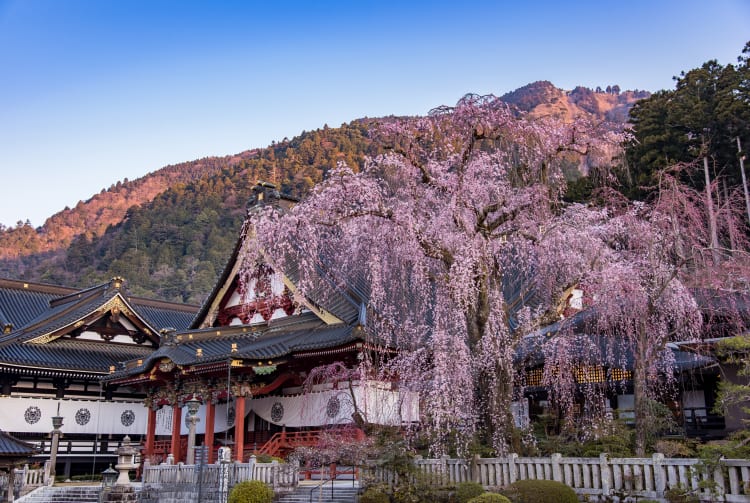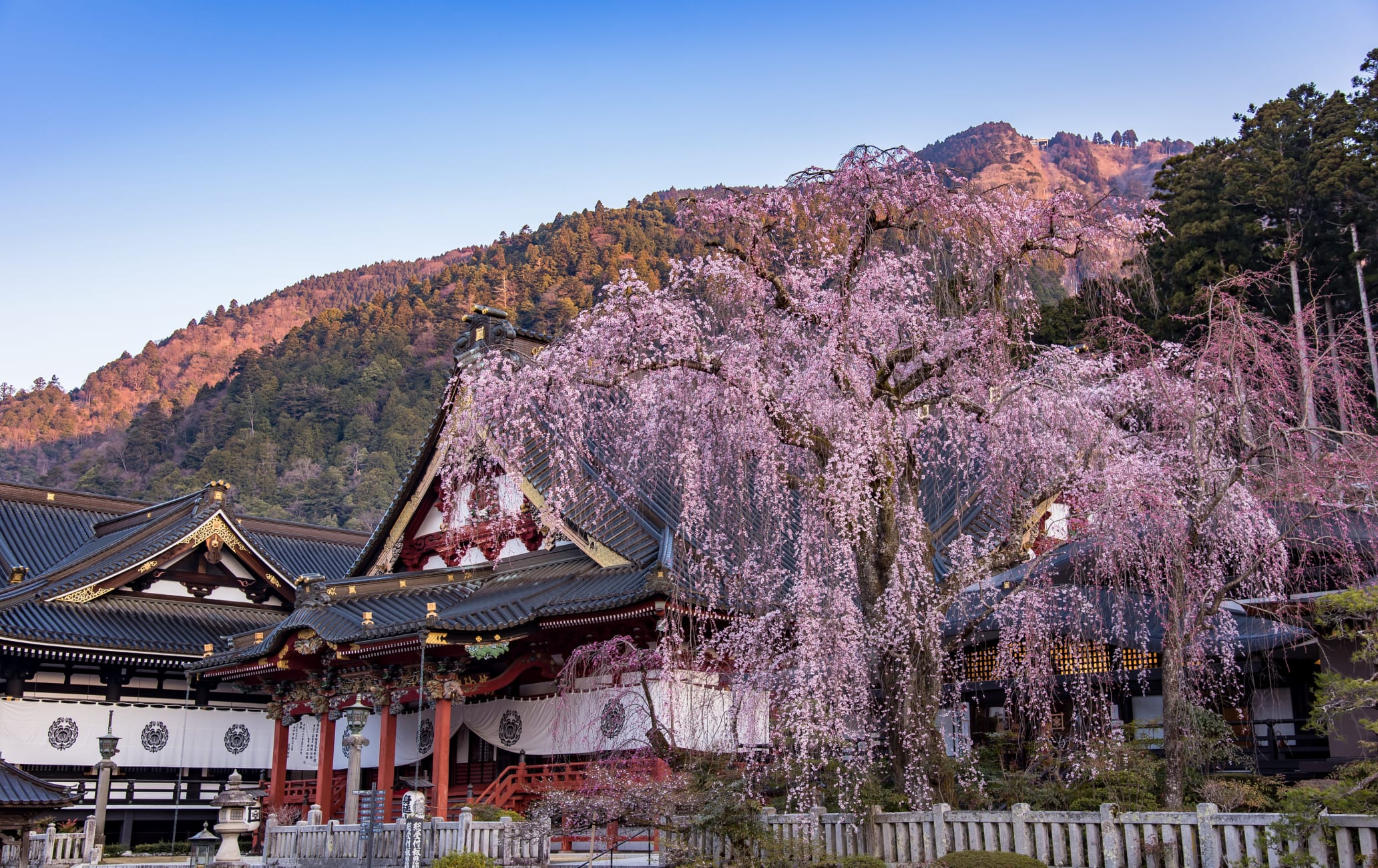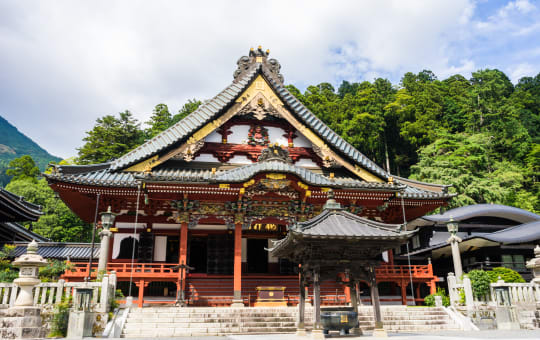One of Japan's most important Buddhist mountain temples
With clear air and sweeping views, a trip to Mt. Minobu refreshes the soul and the senses. Devotees of Nichiren Buddhism, a branch of Mahayana Buddhism founded by Nichiren (1222–1282), have been making the pilgrimage to Mt. Minobu since its main temple, Minobusan Kuonji, was established here in 1274.
Don't Miss
- Minobusan Kuonji Temple, established in 1274, and the resting place of the the Buddhist priest, Nichiren (1222-1282)
- The ceiling of the main temple at Minobusan Kuonji, adorned with a magnificent painting of a five-toed Japanese dragon
- Oeshiki Festival—celebrated on the second weekend in October—that marks the passing of Nichiren with illuminated floats and leather-fringed matoi poles
How to Get There
Take the JR Tokaido Shinkansen Line to Shizuoka Station, change to the JR Tokaido Main Line for Fuji Station, then board the northbound JR Minobu Line for Minobu Station.
You can take an express train to Kofu Station from Shinjuku Station then change to the Minobu Line for JR Minobu Station (about 3 hours).
Take a taxi or a bus from the train station to Minobusan Kuonji Temple. The taxi is about 2,000 yen, but the bus is only about 280 yen.
Staircase to enlightenment
One of the most striking features of Mt. Minobu is its 287 stone steps to enlightenment, known as bodai-tei. You need to be fit to climb these steps without a break, but your reward, if not enlightenment, is an impressive view of Minobusan Kuonji's five-tiered red pagoda.

Spectacular blossoms and a spinning festival
Although close to 1.5 million people visit Mt. Minobu each year, most do so during cherry blossom season in mid-April to see the beautiful 400-year-old weeping cherry tree in front of the main temple.
In early October you can attend the annual Oeshiki Festival featuring frenzied spinning of matoi (long poles with leather strips attached to the top). Devotees of Nichiren Buddhism dance among the town's shops until they reach Kuonji Temple.

The ascent to the summit
Although you can ascend the 1,153-meter mountain via ropeway, the 2.5 hour hike through cedar forests is rewarding. Along the way, you will see ancient graves and many smaller temples. To hike to the top, take the narrow road behind Kuonji Temple. The first grave you see is of an English ship's captain who joined the Nichiren sect in the late 19th century.
Reaching the top
Depending on weather conditions, you should be able to see Mt. Fuji rising majestically from behind the mountain ranges, and a commanding view of the Fuji River as it winds its way to the Pacific Ocean. There is a spacious rest and observation area here.
The lesser temples
On the way up the mountain, there are many smaller temples worth visiting. The first one you see, known as Pomegranate Temple, has small wooden plaques offering prayers for healthy children (the pomegranate is a symbol of fertility in Japan). The second temple you encounter is filled with a thousand tiny golden Buddhas. In spring, the cherry blossoms shade the paths, while in early summer, hydrangea flowers dot the temple grounds with vidid blue.
Encountering pilgrims
If you are lucky, you may see actual pilgrims dressed in white. As the pilgrims ascend and descend the mountain, they chant "Nam-myoho-renge-kyo," a chant for enlightenment.

























































